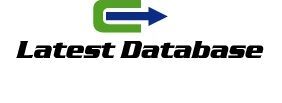
Current Visual
Bridge Inspections
Visual inspection is a simple method that allows inspectors to map spalling, cracks and potholes on bridge decks visually. The technique cannot be used to assess the interior of the concrete structure.
Visual inspections are the least efficient because it addresses problems after they have become conspicuous, dangerous and expensive to fix.
Isn’t is just common sense that once there is a visible crack that it is too late.
Locating deficiencies early in their lifecycle make it less costly and more efficient for asset owners to budget for repairs and more efficiently deploy maintenance crews for repairs.
Chain Dragging
Current manual inspections are visual and typically include an inspection method called chain dragging. Chain dragging is an acoustic technique where the human ear detects changes in pitch or sound made by a chain being dragged over the surface of a structure. It detects delamination which describes the splitting of a structure into layers or the separation of a coating from a coating from a substrate. Bridges suffer elimination due to freezing and thawing, and corrosion of the structure’s reinforcing steel.
The technique is cheap and requires less training because the areas of deterioration are located just by tone. However, chain dragging does not work on structures with asphalt overlays. Additionally, hearing biases can lead to different delamination maps. The results of the technique can also be affected by outside sources of noise such as traffic. Chain dragging only detects existing delamination which occurs after the rebar has been corroded significantly wire rope inspection.
The method is manual, subjective and does not provide enough data to accurately assess the structure or help the asset owner develop an action plan for repairs.

GPR
Current GPR Does Not Compare To BridgeScan® for bridge inspections.
A newer approach to bridge deck assessments is Ground penetrating radar (GPR). GPR utilizes a high-frequency radio signal that is transmitted into the ground while the reflected signal is captured by a receiver and stored on digital media. A computer system determines the time taken for a pulse to travel to and from the target and shows its location and depth. Reflected signals are interpreted by the equipment and displayed on a screen. The reflected signals are used to detect changes in material, cracks, voids, and objects. The technique is used to assess the uniformity and quality of concrete highway surface and detect the deterioration of bridge decks. GPR for bridge surface measurement can be air-launched or ground-coupled.
Ground-coupled GPR uses an antenna placed close to the surface while air-launched systems use directional antennas that are aimed at the surface of the structure from the height of between 30 and 40 centimeters. Ground-coupled antennas are slow but less prone to less prone to radio frequency interference. Air-launched antennas can be used even when traveling at 120 kilometers per hour. The location of objects such as post-tension cables, conduits, and rebar embedded in the concrete uses a high-frequency GPR system. The data can be gathered in a grid format to produce a map of any targets on the concrete, or a simple line scans to determine the thickness of the concrete. While acoustic is subjective, GPR is more quantitative and is not affected by noise. GPR however provides a lot of data not easily interpreted by asset owners.
Ground penetrating radar has many other applications apart from nondestructive testing of bridge decks and approach roadways. The applications include the study of ice, groundwater, bedrock, and soil. It is also used in the mapping of archaeological features, detection of tunnels and mines by the military and location of underground utilities.
BridgeScan®

The latest in bridge deck and approach roadway inspection services.
Infrastructure Preservation Corporation, IPC’s Bridge condition assessment Inspections provide crucial information to asset managers and engineering firms. The comprehensive assessments provided by BridgeScan® allow the asset owners develop an action plan for accurate repairs before the structure becomes critical.
The information is used to budget for maintenance and extend the life expectancy of structures through early detection and deterioration repair. IPC’s BridgeScan® has been validated by the DOT and through coring to prove up submitted results.
www.infrastructurepc.com
Exceeds AASHTO and FHWA guidelines showing 12 levels of deterioration. See below specific graphic interpretation of BridgeScan® results. Coring proved 100% accuracy in both good and deteriorated sections.
